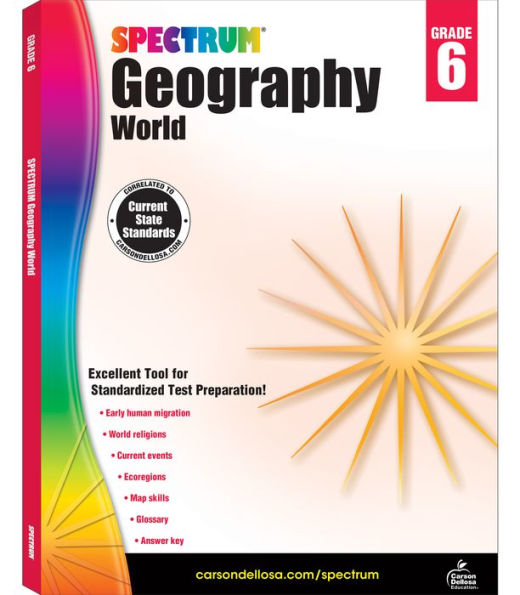| Ancient Civilization | |
| Lesson 1 |
| When the World Was Frozen | 2 |
| Using Special-Purpose Maps | 4 |
| The Impact of the Environment | 6 |
| Lesson 2 |
| Angry Waves | 8 |
| Using a Legend to Identify Ocean Depth | 10 |
| Creating a Tsunami | 12 |
| Materials | |
| Cardboard | |
| Paper | |
| Clay | |
| Papier-mache | |
| Styrofoam | |
| Markers | |
| Crayons | |
| Colored pencils | |
| Construction paper | |
| Box | |
| Flat board | |
| Ancient Europe (Greece and Rome) | |
| Lesson 3 |
| Onward, March! | 14 |
| Reading Historical Maps | 16 |
| The Significance of Xenophobia | 18 |
| Materials | |
| Ruler | |
| String | |
| Lesson 4 |
| And the Winner Is | 20 |
| Comparing Maps of Different Time Periods | 22 |
| When Carthage Was Wealthy | 24 |
| Materials | |
| Markers | |
| Crayons | |
| Colored pencils | |
| The Growth of Europe | |
| Lesson 5 |
| Europe's Cities | 26 |
| Using a Map to Study City Locations | 28 |
| A City on the Rise | 30 |
| Lesson 6 |
| Europe's Rivers | 32 |
| Using a Map to Learn About Rivers | 34 |
| A Rave River Review | 36 |
| Modern Europe and the Rise of the Soviet Union | |
| Lesson 7 |
| Two for One | 38 |
| Using a Physical Map to Compare Continents | 40 |
| Continent Combo? | 42 |
| Lesson 8 |
| The Pearl of Siberia | 44 |
| Using Maps to Compare Lakes | 46 |
| Lake Effects | 48 |
| Materials | |
| Ruler | |
| Middle East and North Africa | |
| Lesson 9 |
| The World of Islam | 50 |
| Locating Islamic Countries on a Map | 52 |
| Islam--A Television Special | 54 |
| Materials | |
| Crayons | |
| Markers | |
| Colored pencils | |
| Index cards | |
| Posterboard | |
| Lesson 10 |
| The Strait Story | 56 |
| Locating Features on a Map | 58 |
| A Strait Visit | 60 |
| Materials | |
| Crayons | |
| Markers | |
| Colored pencils | |
| Africa South of the Sahara | |
| Lesson 11 |
| Desert Diary | 62 |
| Using a Map to Help Plan a Trip Route | 64 |
| Picturing the Desert | 66 |
| Materials | |
| Markers | |
| Colored pencils | |
| Crayons | |
| Ruler | |
| String | |
| Posterboard | |
| Lesson 12 |
| A Fishy Story | 68 |
| Using a Map to Identify Resources in an Area | 70 |
| Creating a Food Chain or Web | 72 |
| Materials | |
| Posterboard | |
| Drawing or construction paper | |
| Paint | |
| Markers | |
| Clay | |
| Papier-mache | |
| Glue | |
| Scissors | |
| South Asia | |
| Lesson 13 |
| Japan Closes Its Doors | 74 |
| Using Maps to Study How Location Helped a Country Isolate Itself | 76 |
| Advising the Shogun | 78 |
| Lesson 14 |
| The Monsoon Season | 80 |
| Using a Map to Link Elevation, Climate, and Vegetation | 82 |
| Living with Monsoons | 84 |
| Southeast Asia, Oceania, and Australia | |
| Lesson 15 |
| A Location Situation | 86 |
| Using a Map to Look at a Country's Location, Land Area, and Management | 88 |
| Four "Little Tigers" | 90 |
| Lesson 16 |
| Diversity in the Pacific Islands | 92 |
| Using a Map to Determine Distance, Direction, and Time | 94 |
| The Sum of Island Parts | 96 |
| North, South, and Central America | |
| Lesson 17 |
| Defining Regions | 98 |
| Using Maps to Understand Different Ways of Defining Regions | 100 |
| New Nations' Capitals | 102 |
| Lesson 18 |
| Connecting Oceans | 104 |
| Using a Map to See How Technological Advances Affect Travel Time | 106 |
| Planning a New Canal | 108 |
| Materials | |
| Ruler | |
| String | |
| Almanac | 110 |
| Glossary | 134 |
| Index | 138 |





















